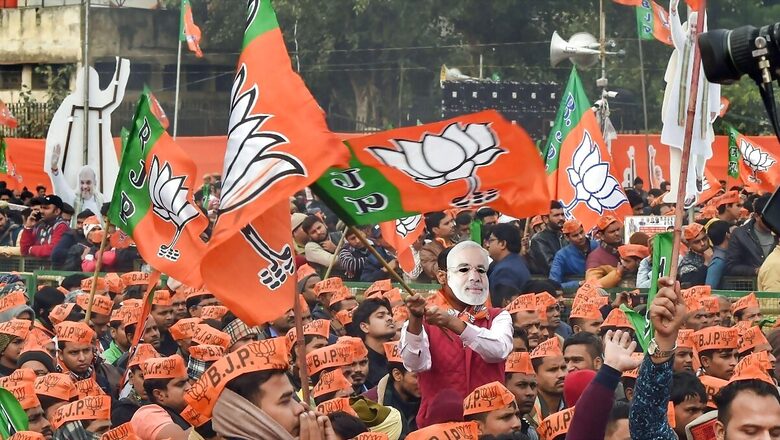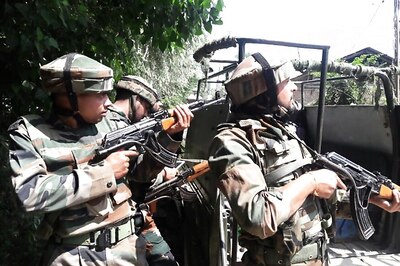
views
At the end of Phase 3, the mood in the Congress and among its supporters, especially in the media, was quite upbeat. Though regional allies of the INDI alliance have been maintaining a studied silence, the Congress social media brigade began to anoint Rahul Gandhi as “India’s next Prime Minister”. Priyanka Gandhi’s spirited and articulate campaigning in Raebareli has further enthused the ranks. Some journalists noticed a new spring in Rahul Gandhi’s steps with few being ready to call the elections, claiming the tide has turned.
Some of this is gamesmanship and much of it is restricted to the digital universe. But a certain amount of spillover to the ground cannot be ruled out, as the penetration and density of social media has increased exponentially since 2014, especially post-Covid. While this may have an impact on the ‘satta bazaar’ and, arguably, perhaps sometimes the stock market as well, how far the voter gets influenced by such atmospherics remains debatable.
The BJP’s moves in this game of narrative building have been fascinating. It started with a clarion call of “400 paar” but during the first two phases toned down its pitch and trained its guns first at the Congress manifesto, alleging its hidden agenda of shifting economic resources towards a certain community in the garb of wealth redistribution. This was followed by a more direct assault on the caste calculus of the party. But after the third phase, the BJP clearly shifted gears towards its trump-card project of the Ram Mandir with Narendra Modi making yet another trip to Ayodhya.
Critics have accused Modi of shifting goalposts in the course of the campaign. They have attributed it to the lack of any overarching issue and the absence of any discernible “Modi wave” as was evident during the 2014 and 2019 elections. Some have even found the prime minister to be on the back foot, betraying signs of nervousness. But Narendra Modi’s admirers think it is all part of his strategy, carefully calibrated for each phase of this over-extended poll schedule. This is evident not only in his speeches but also in media interactions. Starting with lengthy interviews to television channels and newspapers, he is now giving short bytes to journalists on the campaign trail emphasising positive messaging and exuding confidence.
However, all this was ‘time pass’ over ‘cutting chai’ (to use a Mumbai phraseology) or reading tea leaves as it were. By the time Phase 4 was over, those doomsday prophets who predicted a rout for the BJP had started hedging their bets and training guns at the Election Commission and the usual fall guy – EVMs or electronic voting machines. Some exit poll experts who were being lauded at the start of the elections for sounding notes of caution for the BJP are now being taunted for saying they “don’t see any change in voting patterns in 2024 compared to 2019”, insinuating that they are spouting the BJP line.
Surely, there are a few covert election operators masquerading as independent analysts who are making a last-ditch effort to swing border-line voters by predicting a dismal scenario for the BJP. Not sure whether their views are being amplified by the Congress’ official communication apparatus, but they don’t seem to be resonating with the public.
Thus the artificial heat generated in these otherwise tepid elections is yet again showing signs of cooling off. Some partners of the INDI alliance have dialled down their aggression. Mamata Banerjee has announced that in the event of the alliance forming the government – her party is going to support it from outside. This, in effect, is disassociating herself from the group. Only Akhilesh Yadav is still maintaining a high pitch. This is understandable because large parts of Uttar Pradesh – especially Purvanchal – are yet to vote and it would be premature for him to give up on posturing.
Rumours and purported leaks apart, election experts like Prashant Kishore have shown how the arithmetic is loaded in favour of the BJP. For them, it is no longer about whether the BJP is winning but by what margin. For the general public too, with the final outcome almost certain, the interest has now moved to the matches being played in the side courts, such as in Amethi and Raebareli and questions such as how many seats will the Trinamool Congress win in West Bengal or if the Samajwadi Party is going to recover lost ground in Uttar Pradesh. The fate of Sharad Pawar-led NCP and Uddhav Thackeray’s Shiv Sena in Maharashtra also holds some excitement.
If Modi and Shah had displayed some diffidence in the earlier phases, it would have been for the scale of victory. Anything short of an absolute and decisive majority would not suit the roadmap laid by Modi for his third term. It is not for nothing Narendra Modi would have given a call for “400 paar” to begin with.
With elections in nearly 70 per cent of the seats already having been polled, and with voter turnout progressively increasing and the remaining few phases happening in areas where the BJP has a relatively stronger position, there is a visible rise in the confidence level of the BJP leaders. As a commentator quipped, “Modi has got his mojo back”. But the Congress is maintaining its slogan of “Dakshin mein saaf, Uttar mein half” claiming the BJP’s downward trajectory continues.
This poses a risk of a 2019 deja-vu. A second anti-climax may be too much for Modi’s detractors to digest, who may already have a Plan B for delegitimising the elections alleging foul play and rigging. For this, one may have a playbook ready, borrowed from some foreign examples. One has been seeing a build-up to this in many editorials in Western media and motivated innuendos on social media. EAM S Jaishankar, not known to hold his punches, has at a recent forum accused some Western interests of trying to not only influence but interfere in Indian elections.
Curiously, a slickly produced promo released by the American Embassy has gone viral. In the video, the incumbent American Ambassador eloquently praises Indo-US relations, stating that they have never been stronger and emphasising the bright future ahead. The timing of its release could not have been a coincidence.
‘Samajhdaar ko ishara hi kaafi hai’, as the saying goes.
The author is a current affairs commentator, marketer, blogger and leadership coach, who tweets at @SandipGhose. The views expressed in this article are those of the author and do not represent the stand of this publication.















Comments
0 comment